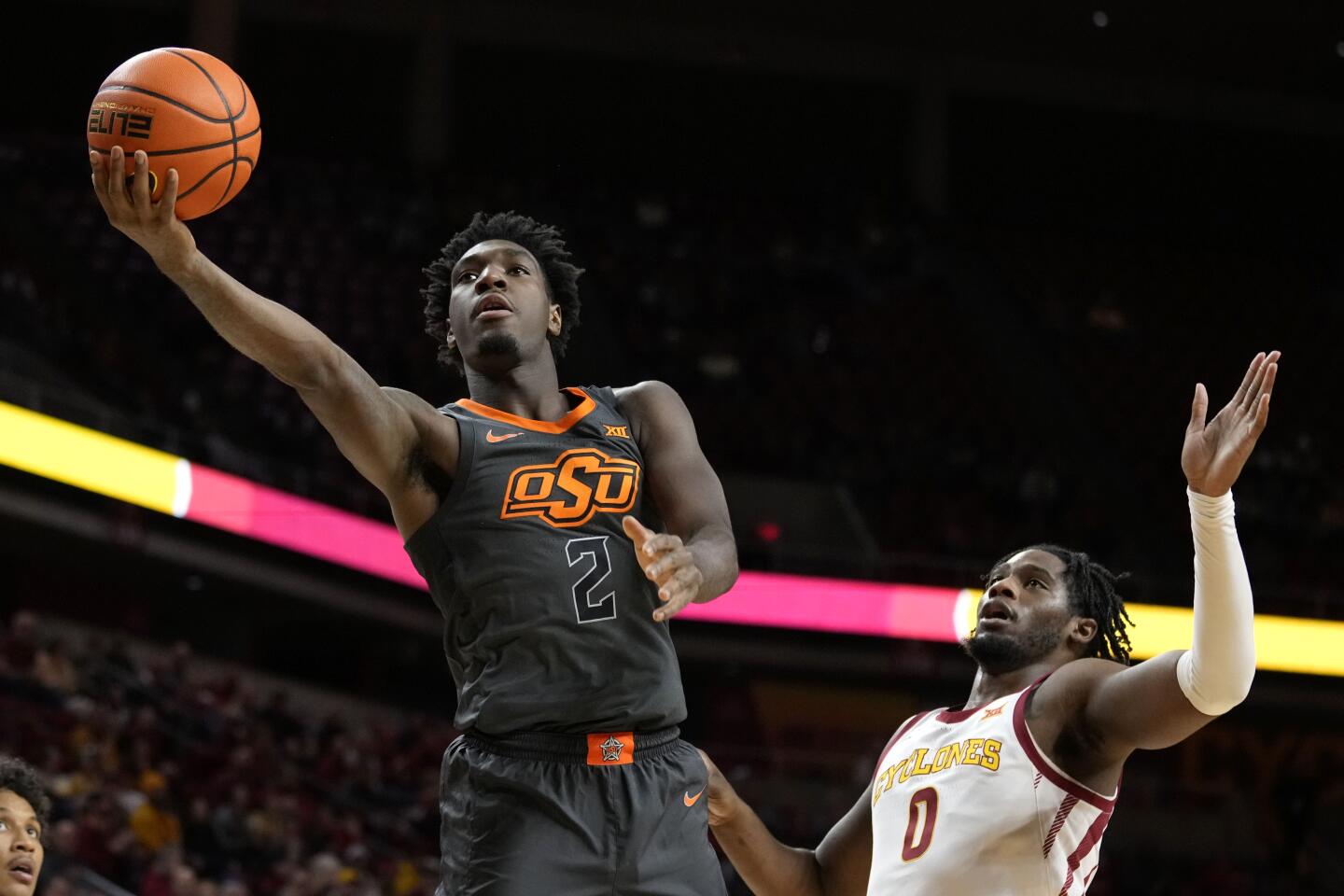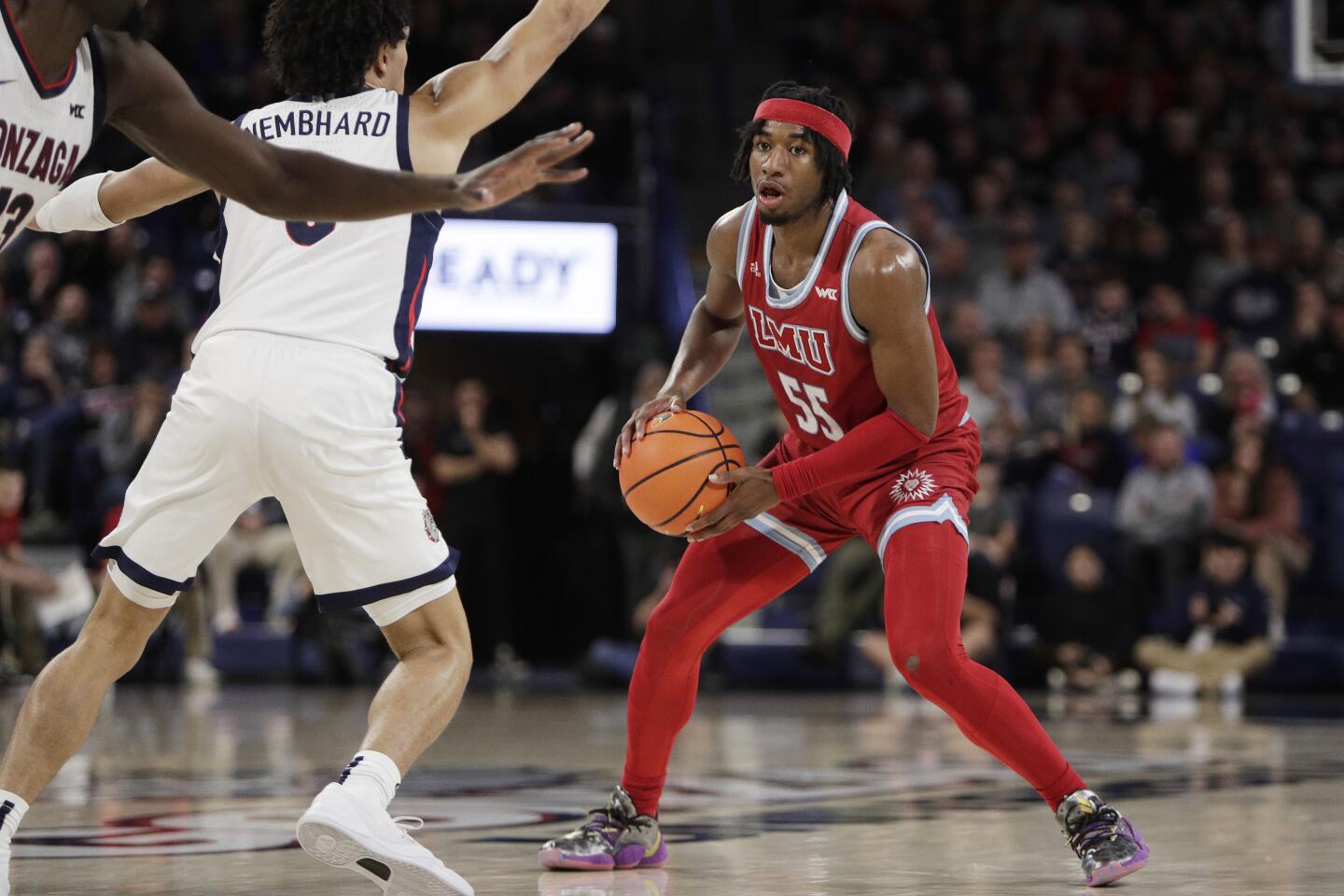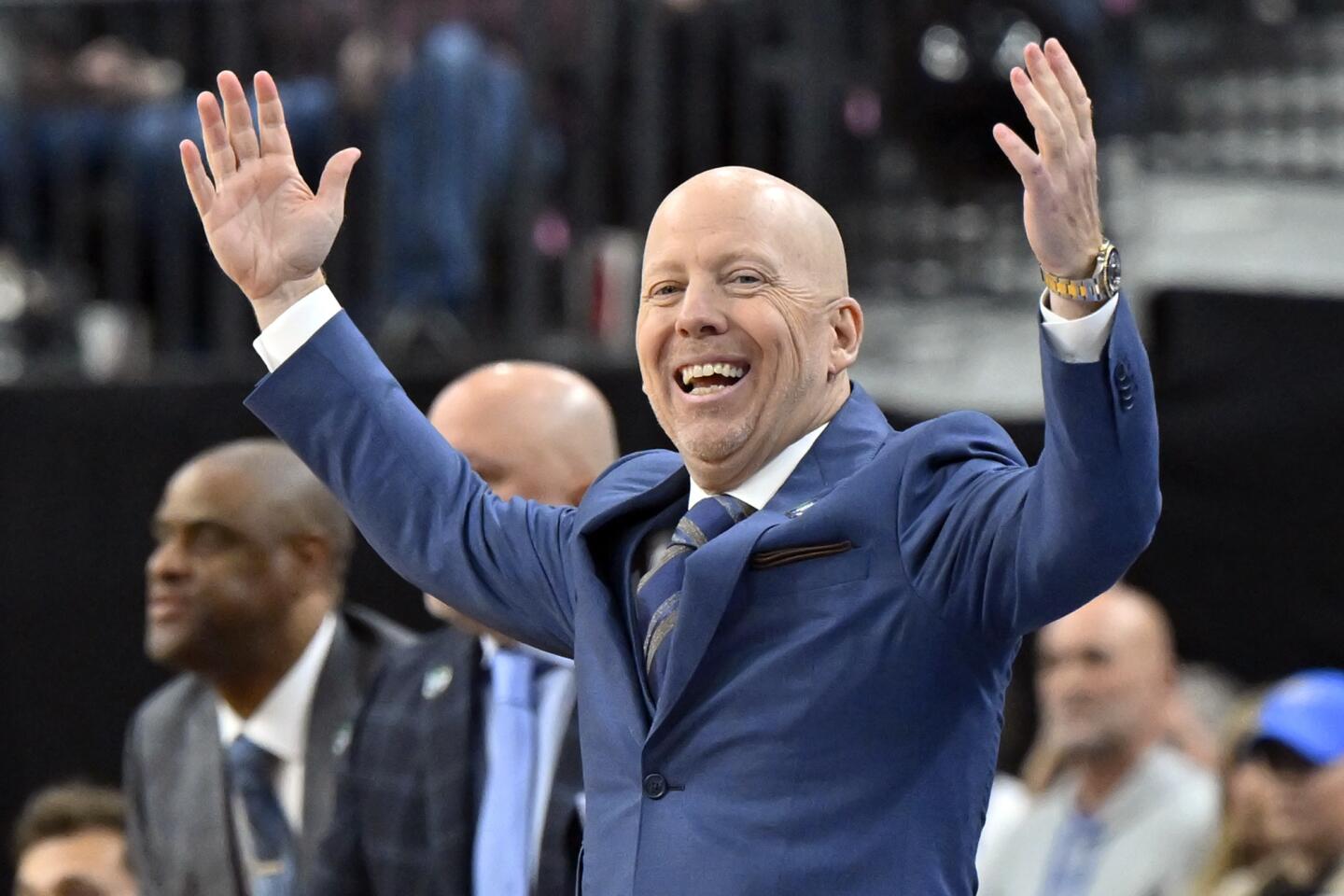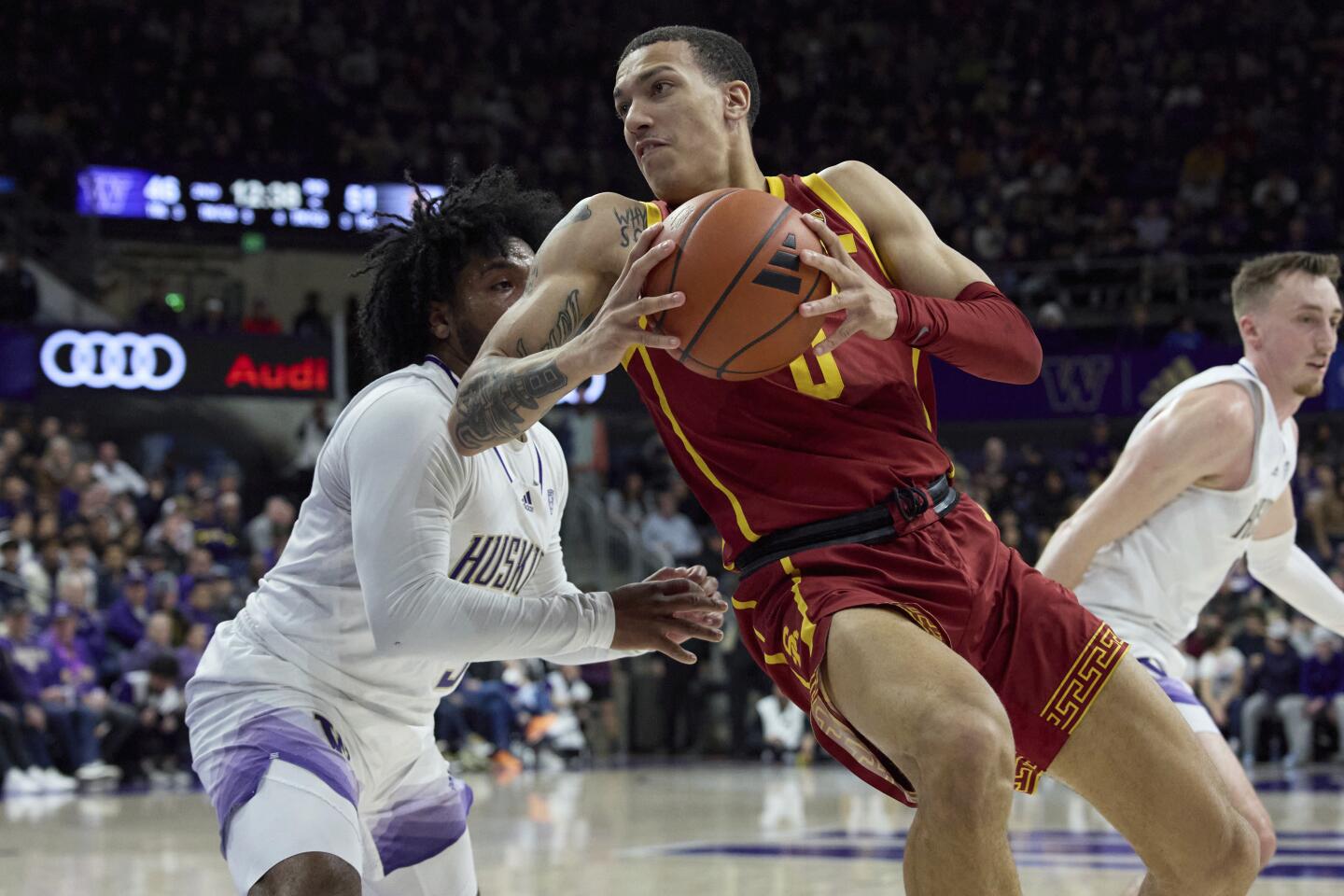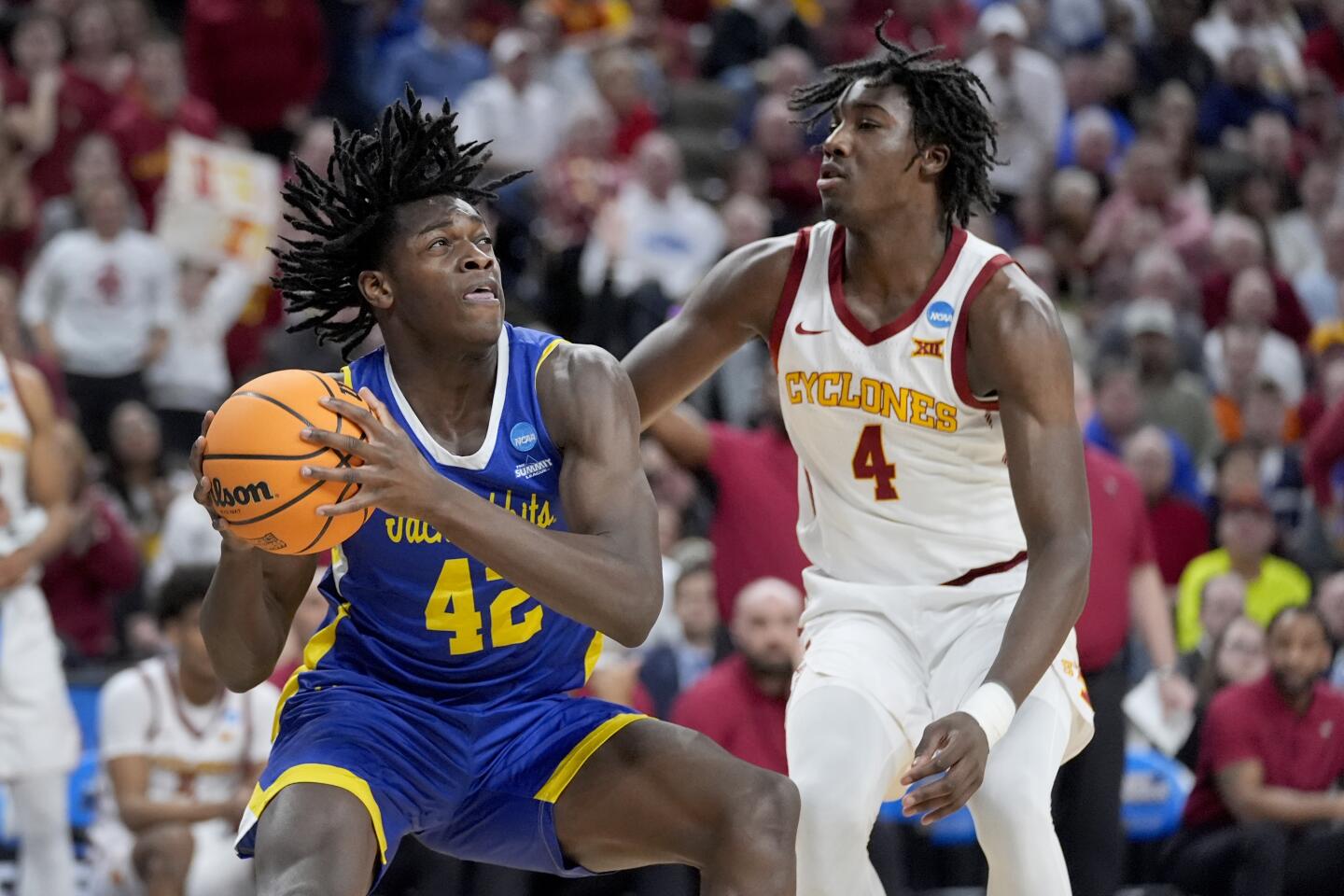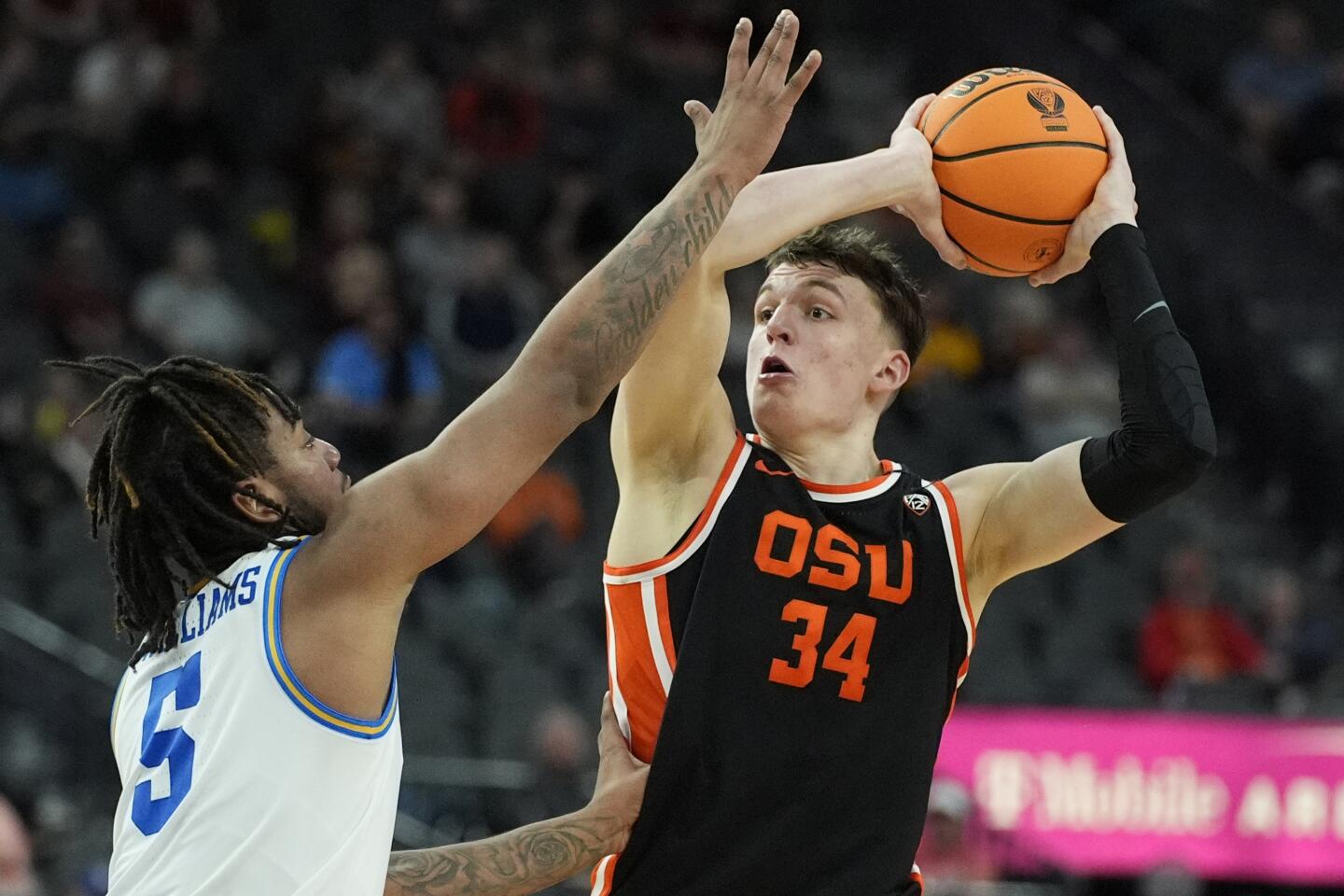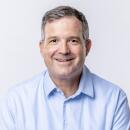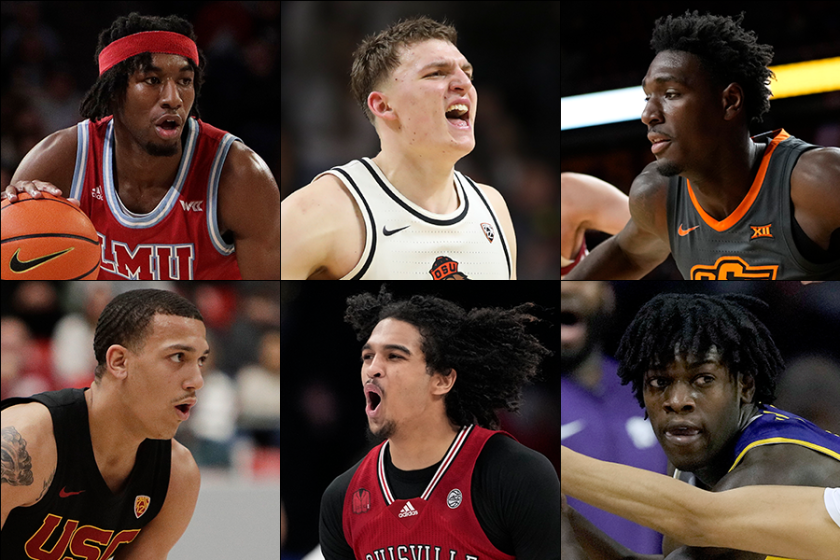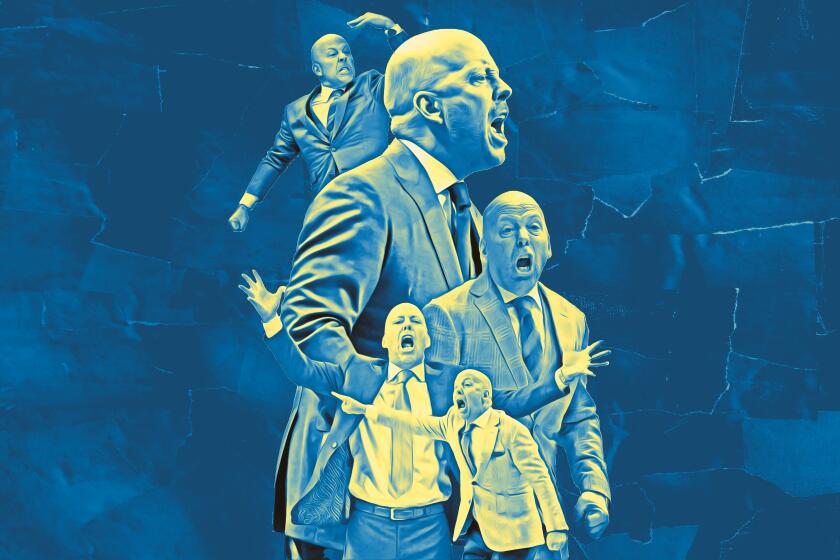- Share via
The wooing is over, the cash committed, the targets landed.
What could be considered the first free-agency class in UCLA basketball history — six transfers who might fill all the team’s needs, not to mention as many as four starting spots — materialized in the wake of Mick Cronin’s worst season in 16 years.
Never one to hold back, Cronin told his players several harsh truths after they staggered to a 16-17 record. He was the coach at UCLA. He needed to assemble the best possible team, which meant overhauling a young roster. As much as he loved his current players, who had arguably overachieved on the way to a fifth-place finish in their final Pac-12 season, he understood if anyone wanted to depart given the expected influx of transfers.
A breakdown of the six players UCLA men’s basketball coach Mick Cronin has brought in to revive the Bruins ahead of the 2024-25 season.
In essence, it was the jettisoning of a wait-and-win development model in favor of an infusion of proven talent. As four players left for other teams and a fifth declared for the NBA draft, the Bruins snagged some of the transfer portal’s top talent, addressing deficiencies in shooting, rebounding and savvy.
How did they do it? Like any good sports franchise in 2024, they showed their targets the money.
“Our NIL grew exponentially,” Cronin told The Times this week, referring to the team’s name, image and likeness resources. “All you have to do is look at our recruiting class this year versus last year.”
A year ago, the Bruins brought in seven freshmen and only one transfer. Those numbers basically flipped this offseason, with six transfers and two freshmen on the way.
The latter ratio was closer to the one Cronin wanted a year ago after bidding farewell to program mainstays Jaime Jaquez Jr., Tyger Campbell, Jaylen Clark, David Singleton and Amari Bailey but could not manage because of relatively meager NIL funds.
On the night his team lost to Cal State Northridge in December, Cronin used a baseball free-agency analogy to describe his plight, saying he had wanted to bring in veteran players.
“So did the [Cincinnati] Reds,” Cronin deadpanned, ”but the Dodgers got them.”
So where does that leave the Bruins seven months later when it comes to the biggest spenders in the college game and their pro equivalent? Cronin anticipated the question before it was asked.
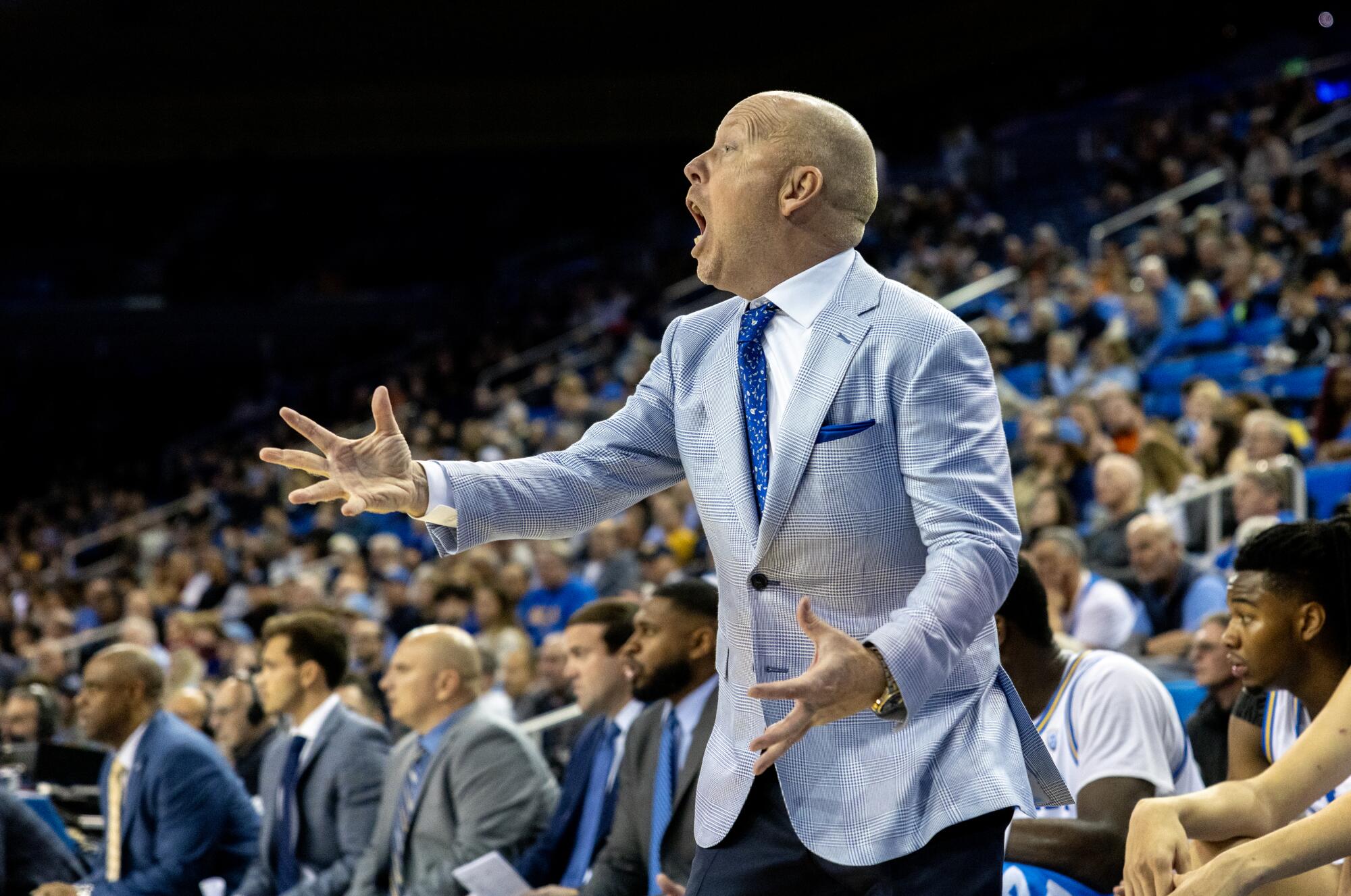
“I know you’re going to ask me, are we the Dodgers? Where do we line up?” he said. “It’s tough to say because the way things are now, you don’t know. You only can guess because say I beat you for a recruit, you’re going to tell everybody, ‘Oh, he gave him $1 million.’ It used to be, ‘Oh, they cheated.’ Now it’s, ‘Well, they gave him $1 million. They gave him $1.5 million.’ Well, I can tell you, nobody [on the team] got $1 million.
“But you just don’t know [how you stack up against other teams] because it’s not pro sports, the books aren’t open, the contracts aren’t public. So nobody knows. In fact, most of the collectives have confidentiality agreements in their contracts, so the contract can be voided if you tell people what you got. So there’s just so much ambiguity with it all. If you asked, how much did you spend on your team and where did you stack up? Well, you’re not sure. All you know is you were able to get players.”
Indeed he did. It’s possible UCLA imported four new starters to pair with returning point guard Dylan Andrews given the level of talent set to arrive in Westwood. Skyy Clark was Louisville’s leading scorer. Dominick Harris ranked third in the nation by making 44.8% of his three-pointers. William Kyle III was the Summit League defensive player of the year. Kobe Johnson was USC’s best perimeter defender and an underrated passer. Eric Dailey Jr. can play every position on the court. Tyler Bilodeau is a matchup nightmare because of his combination of size, skill around the basket and long-range shooting.
“If we need to play small,” Cronin said, alluding to the option to play the 6-foot-9 Bilodeau at center, “we can play small and good luck trying to put your big guy on him.”
Somehow, even amid the glut of talent on the way, Cronin also landed Harvard-Westlake guard Trent Perry, a McDonald’s All-American and The Times’ high school player of the year, to supplement a small freshman class that included Corona Centennial guard Eric Freeny.
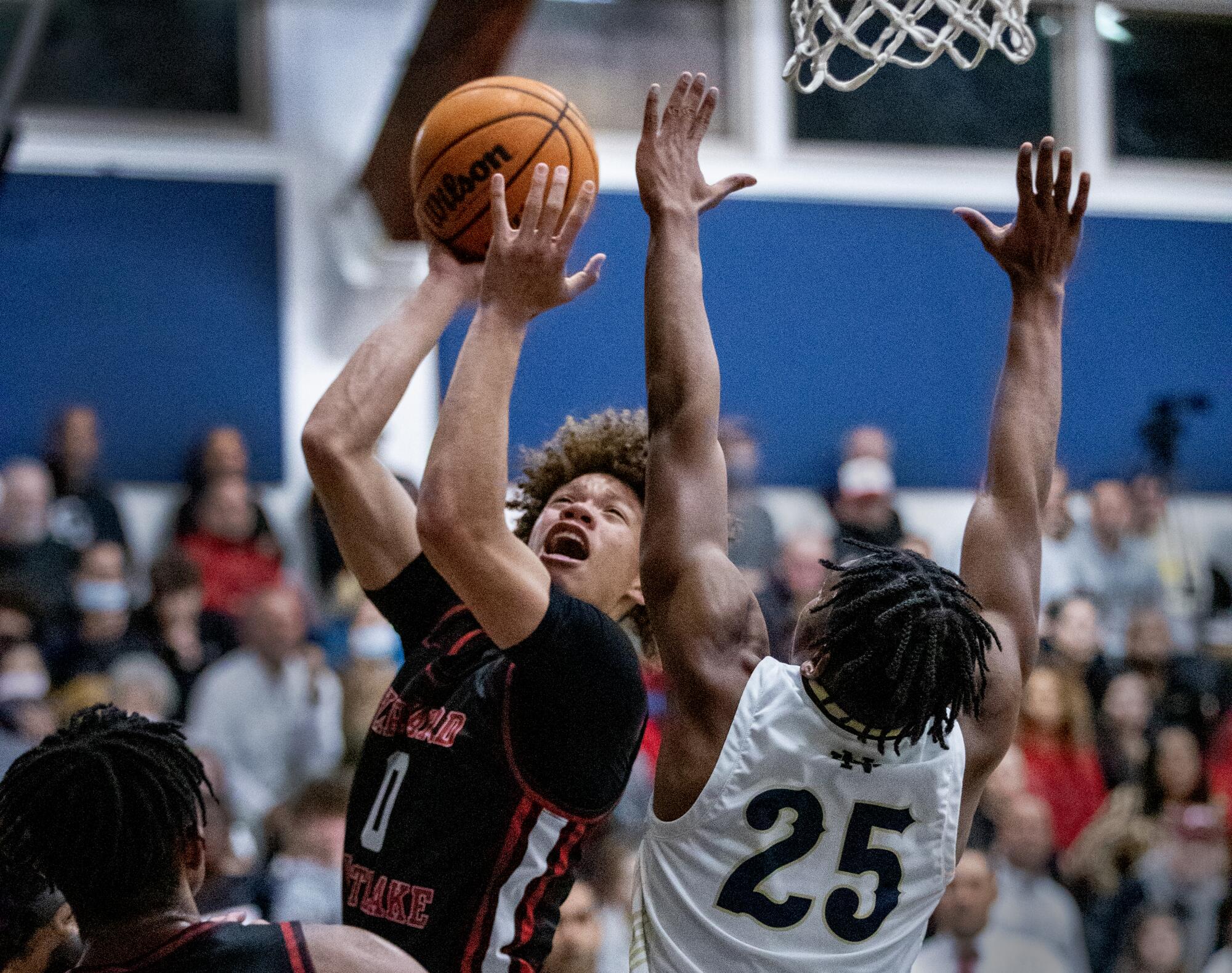
Cronin’s message to Perry was that he was a winner who could help the Bruins raise their first national title banner in 30 years and enhance his NBA stock even if he didn’t start immediately, just like former first-round picks Russell Westbrook, Zach LaVine and Peyton Watson before him.
“It’s just a fallacy that you have to come in and play 35 minutes with the ball in your hands to make it in the NBA; it’s just not true,” Cronin said. “I mean, all you’ve got to do is look at Reed Sheppard, who didn’t start at Kentucky [except five games] this year and he’s going to go third or fourth according to every mock draft.”
UCLA’s newcomers also heard the same thing the returning players did — that they would have to fight for playing time on a roster adding a combined 75.1 points of scoring punch from the college level last season, including five players who averaged double figures.
“People say, ‘Well, they’re going to have this guy, they’re going to have that guy,’” Cronin said. “Well, first of all, if you’re a competitor and you really want to be on a great team that has a chance to win the Big Ten [Conference] in its first year and have a chance to go to a Final Four or compete for a national title, you should want other great players on the team. That’s No. 1. No. 2, in this day and age, everybody wants to go play in the NBA, don’t you think it would behoove you to play every day against another good player that would make you better and wouldn’t it help you get more exposure if you’re on a great team?”
All these imports will come with a consequence, of course. Three players who started a combined 77 games last season — Lazar Stefanovic, Sebastian Mack and Brandon Williams — could move to the bench. They appear to be on board with a possible diminished role given their willingness to stay and their message to their coach.
Williams needed only 30 seconds to let Cronin know his intentions, including the willingness to take a redshirt season if necessary.
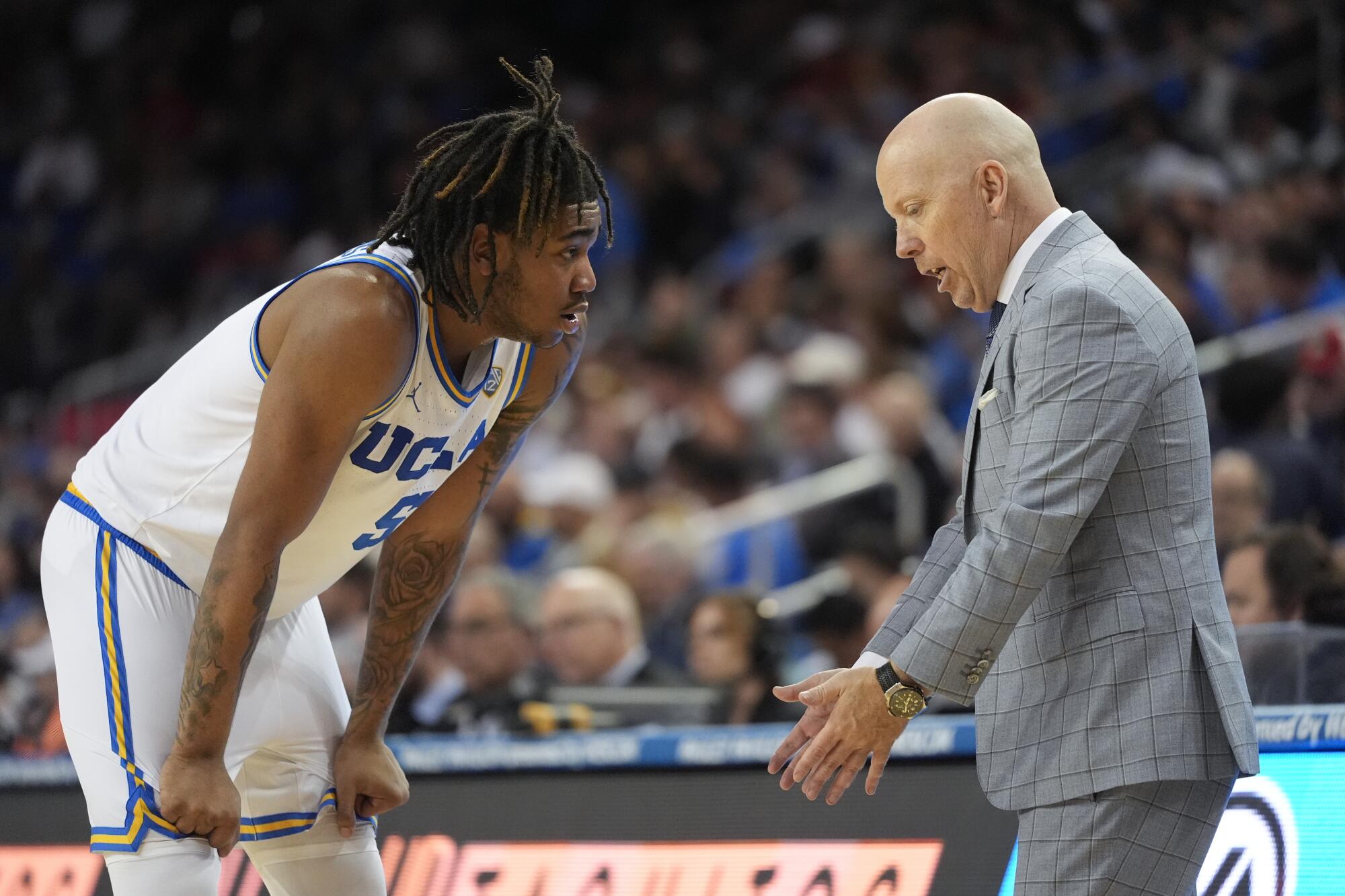
“His meeting was, ‘I hate to lose, coach. I know you’ve got to get some players,’” Cronin recalled. “‘Let me know if I can help, but I love you guys, this is where I’m supposed to be and I trust you, I trust the coaches, go get some players so we can win. I ain’t going anywhere.’”
Unlike last summer, when Adem Bona was rehabilitating a shoulder injury and freshmen Aday Mara and Berke Buyuktuncel didn’t arrive on campus until September, the entire roster besides Harris should be practicing together by mid-July once Mara returns from a stint with the Spanish under-20 national team. Harris is expected to join the team in early August once he graduates from Loyola Marymount.
Cronin said he expected to man the grill at his Encino home more than ever in an attempt to bond his new team while also obtaining pictures of each player as a kid in his first basketball uniform as part of a series of “Guess who?” games.
“We’re going to have to put time into getting to know each other as people before you can win as a team,” Cronin said. “I just don’t know how you develop chemistry until you know the guy you’re playing with or the coach you’re playing for.”
One newcomer won’t need an adjustment period with his boss. Dave Andrews, who was Cronin’s performance coach during his first six seasons at Cincinnati, is taking on the same role with the Bruins after being persuaded to become what Cronin called “maybe our most important acquisition of the offseason” following stints as a football strength and conditioning coach at Illinois, Notre Dame, Pittsburgh and Iowa State.
When Cronin introduced Andrews to the slides-under-a-door-thin Mara, the coach told his 7-3 center, who needs to add significant bulk to play more than the 9.6 minutes he averaged last season, “Here’s the most important person in your life; I know you think it’s your mom or dad, but it’s Dave Andrews.”
UCLA coach Mick Cronin says he ignores commentary about his penchant for yelling, instead focusing on his connection with his players.
Andrews’ conditioning regimen could be especially critical given Cronin’s intention to use a full-court press more than he has in his first five seasons with the Bruins. The goal is to solve problems with playing time and help UCLA lead the Big Ten in turnovers forced and turnover margin, which would go a long way toward helping the Bruins win the conference.
“We don’t need anyone to pace themselves,” Cronin said. “Hopefully we’re going to be able to play at an all-out pace and wear people out.”
UCLA’s extreme talent upgrade prompted Cronin to go with a heavyweight nonconference schedule that’s expected to include games against former Pac-12 rival Arizona in Phoenix, Gonzaga at the Clippers’ new Intuit Dome and North Carolina in the CBS Sports Classic at Madison Square Garden in New York. The following season, the Bruins will play Arizona at the Intuit Dome and Gonzaga in Seattle as part of more fundraising efforts for NIL purposes.
If UCLA can maintain or enhance its robust NIL funds, it will help Cronin keep pace with other powers who are annually restocking with top veteran players.
“The days of having a young team and trying to grow that team to where they all get older and get better as they get older, that’s not happening anymore,” Cronin said. “And you can’t compete at a high level with a young team. So it’s exponentially changed in the direction of where you’re bringing in older guys to fill spots.”
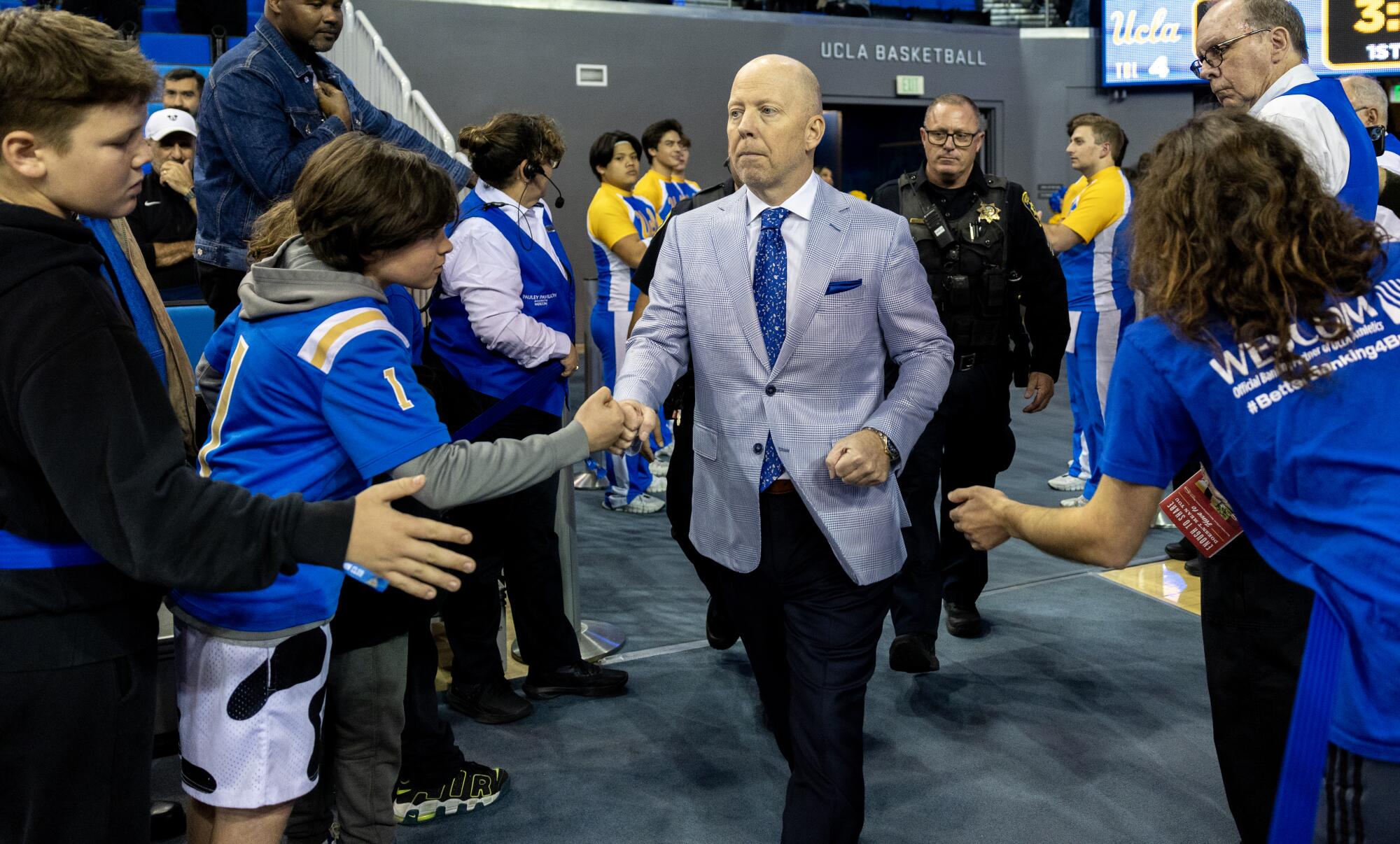
One thing has remained the same, making Cronin feel a bit prophetic. Even going back to his days at Murray State not long after the turn of the century, the coach emphasized that his program would be only as strong as the commitment of former players as well as donors and fans to making the team a success.
Two decades later, UCLA’s big donors and casual fans alike stepped up, athletic administrators emphasized the importance of NIL and … voila, the Bruins might be back on the verge of something special.
“It took us a year longer than I would have liked to get things where they needed to be and without naming names, there were obviously some people who really carried the weight,” Cronin said. “But there’s also grassroots level, so there’s literally people out there who are donating $10 a month, but we’re talking about people who don’t have that to give; their $10 a month is maybe hurting their pocketbook as much as somebody who gave $100,000.
“So basically the whole system now is relying on passion and love for the program and probably somewhat belief in the coaching staff, so for that it’s a huge thing to me for people who are supporting the program.”
Cronin doesn’t feel like a marathoner who has breasted the tape so much as one in the middle of a race. While every transfer besides Johnson has remaining eligibility beyond next season, Cronin pointed out that even his freshmen will be free agents once more come the spring of 2025.
“The craziness of it for now is, we had a good year in the portal and we were able to compete in free agency,” Cronin said, “but next year, you’ve got to be able to do it again.”
More to Read
Go beyond the scoreboard
Get the latest on L.A.'s teams in the daily Sports Report newsletter.
You may occasionally receive promotional content from the Los Angeles Times.

